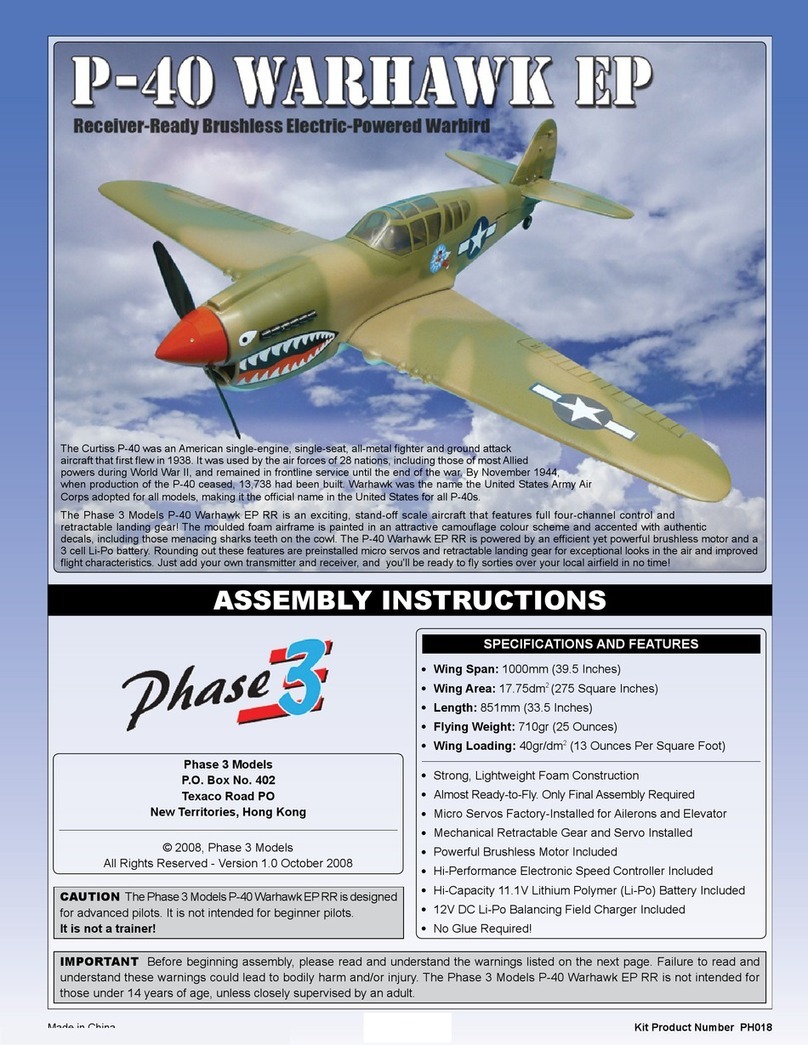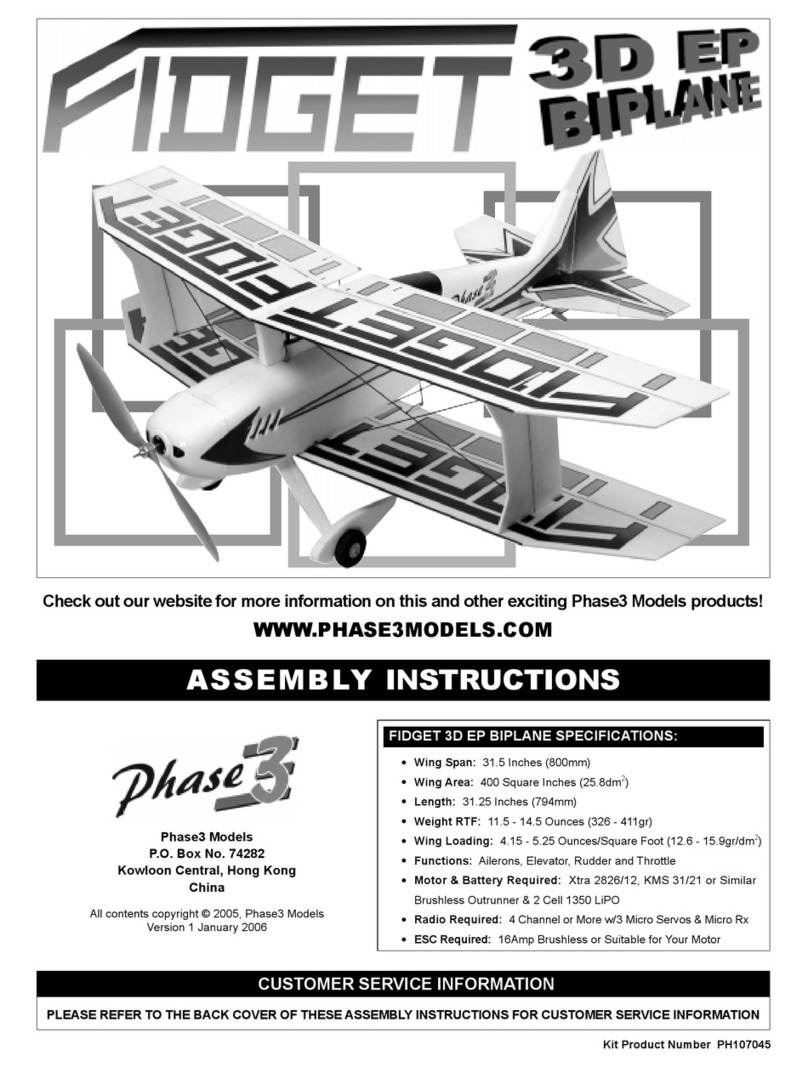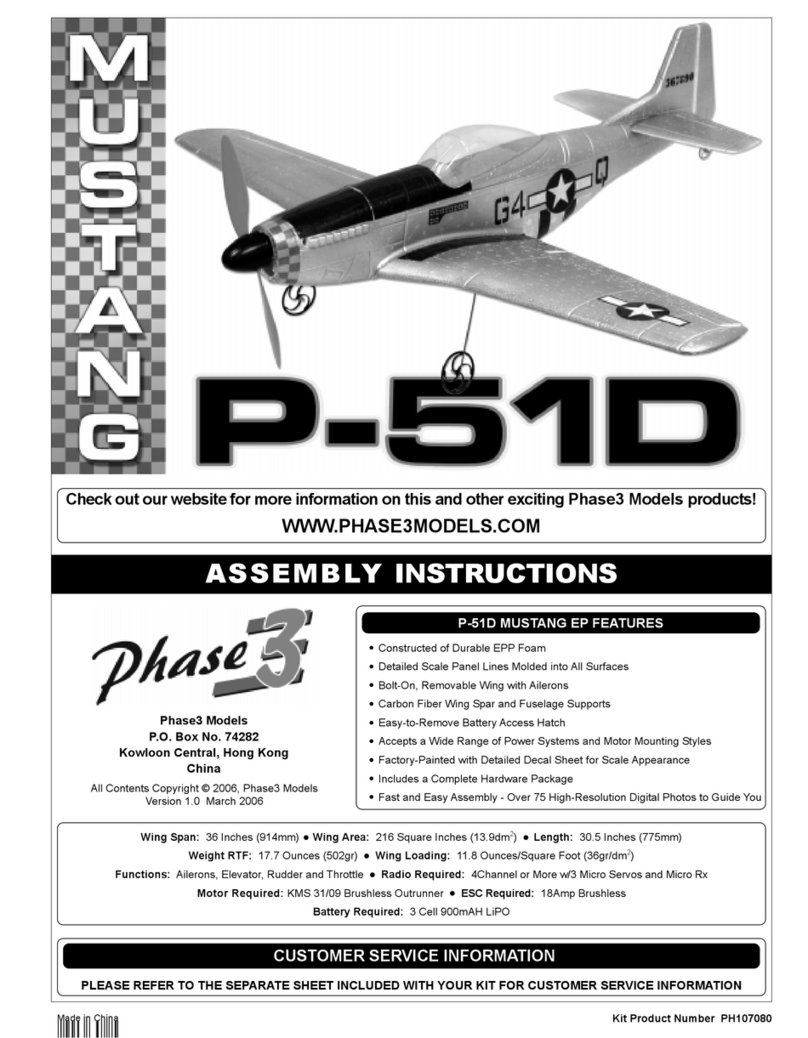
2
FOR YOUR SAFETY - PLEASE READ AND UNDERSTAND THESE WARNINGS
●Donotyyouraircraftifanothermodelisonthesamefrequency
as you.
●Neveryyouraircraftfromthestreetoratnight.Alwaysyin
an open area free of obstructions.
●Whenying,makesureanyspectatorsarebehindyou.
●Always be conscious of the spinning rotor. Be careful not to allow
loose clothing to be drawn into the rotor.
●Because your aircraft is operated by radio control, it is important
to make sure you are always using fresh and/or fully charged
batteries. Never allow the batteries to run low or you could lose
control of the model.
●Never attempt to disassemble any of the aircraft's components
- especially the electronics.
●Do not allow any of the electrical components to get wet or
electrical damage may occur.
GENERAL WARNINGS
●Always turn on your transmitter before turning on the aircraft
and always turn off the aircraft before turning off your transmitter.
●Alwaysunplugthebatterywhennotyingthemodel.
●Never cut the receiver aerial shorter or you could lose control
ofthemodelduringight.
●Whenyingtheaircraft,makesureyourtransmitteraerialis
completely extended.
●Never attempt to disassemble or modify any of the radio system
components.
LITHIUM POLYMER BATTERY WARNINGS - YOU MUST READ THIS BEFORE CHARGING YOUR BATTERY
RADIO SYSTEM WARNINGS
●You should complete a successful range check of your radio
equipmentpriortoeachnewdayofying,orpriortotherst
ightofaneworrepairedaircraft.
●If your aircraft gets dirty, do not use any solvents to clean it.
Solvents will damage the foam and plastic. Use a dry cloth to
clean any dirt from the outside of the aircraft.
● Thisproductmayexplodeorcatchre.Seriousinjurycanresultfrommisuse.Seriousinjury,lossofproperty,reanddeath
can result from misuse of this product.
● Allinstructions,warningsandcautionsmustbefollowedatalltimes.Failuretodosocanleadtoseriousinjuryorre.
●Do NOT use this product before reading and understanding all directions and warnings.
●Do NOT use or charge if the battery is hot.
●Do NOT leave in direct sunlight or in a hot car or storage area.
●Do NOT overcharge. Maximum voltage for each pack must be followed.
●Do NOT get wet or expose to moisture.
●Do NOT short-circuit the battery.
● ONLYdischargeandchargethebatteryoutdoorsorinaresafecontainer.
●Do NOT leave the battery connected when not in use.
●Do NOT operate or charge unattended.
●Do NOT use the product if you do not understand the warnings and proper use of the product.
●Always let the battery cool and "rest" between uses and charging.
● Werecommendtheuseofaresafecontainerwhenchargingorstoring.
●Do NOT charge inside your car or inside your house.
●Inspect the battery before each use for swelling or other malformation. If the cell has ballooned, it MUST be discarded.
●Check polarity and then connect battery to charger.
●In use, do not over-discharge or exceed maximum discharge.
●When handling the battery, remember not to poke, bend or damage the cell. The cell outer casing is soft and can be damaged.
●Remember, the cells must never exceed 160 degrees Fahrenheit (71°C) for any reason.

































